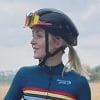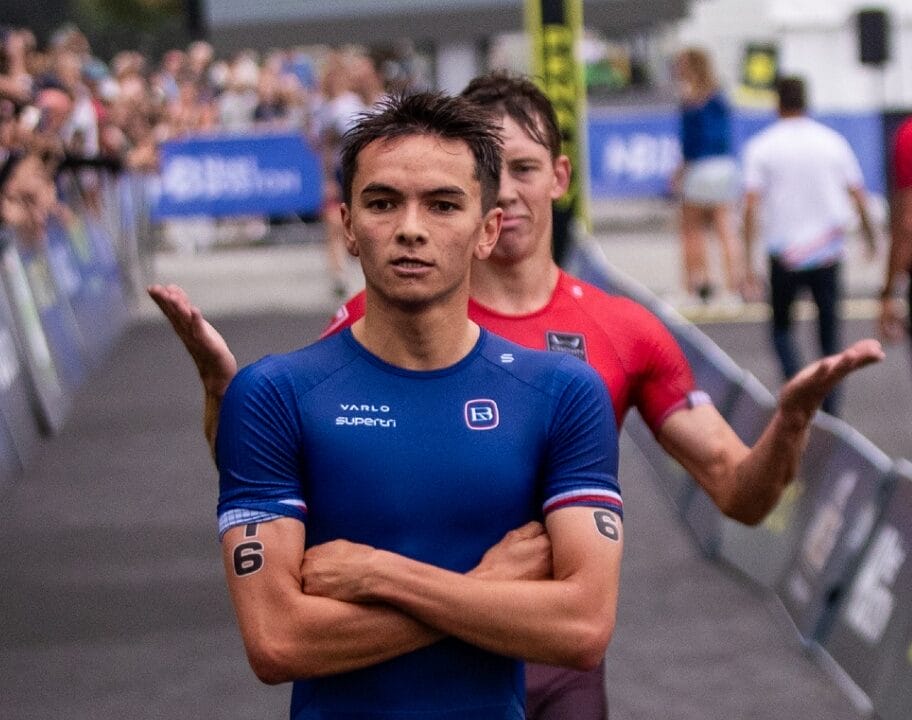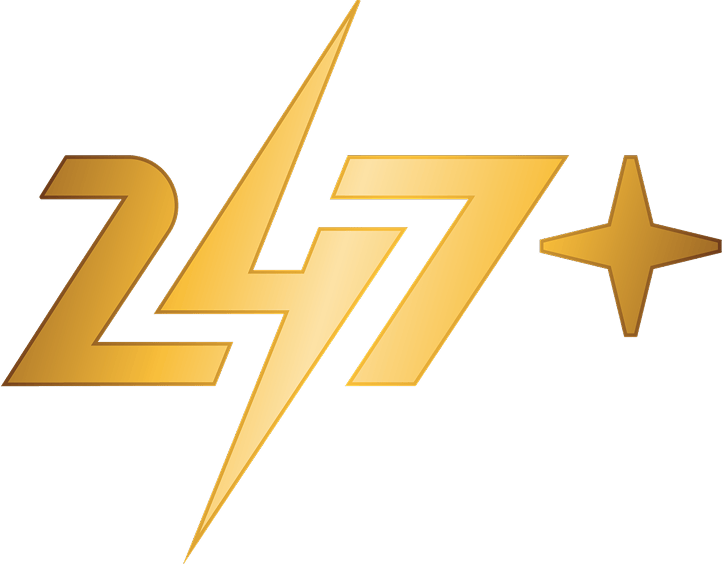Plenty of age-group triathletes have dreams of mixing it up at the pointy end of the field. But getting to that level without being able to train full time brings with it a careful balancing act and requires near-on circus level juggling skills. Because balancing swimming, cycling and run training, keeping on top of your strength and conditioning with doing well at work and showing up for family and friends in a meaningful way – while still having time to sleep and eat. It’s a lot. But it’s not impossible.
To find out how a top level age grouper manages the triathlon-life juggle, we caught up with Team Outlaw member, Donald Brooks. The 2024 AG45-49 IRONMAN Kona champion, Donald balances triathlon training with full-time work and life as a husband and a dad to two young boys. With age group world titles from super sprint to full distance, we got his top tips for keeping the plates spinning. From what to prioritise in training, to how to adapt to a changeable schedule.
From underwater hockey to triathlon – the journey to that first swim-bike-run start line
Like so many of us, what started as a fresh challenge to give a new sport a go quickly escalated into a full blown tumble down the triathlon rabbit hole. Donald Brooks might have close to 20 age group European and World titles to his name to date – but how did he get into triathlon in the first place?
“I was a club level swimmer from a young age, and with this swimming background at 14 I started playing underwater hockey. Over a 20-year period this saw me competing at an international level, at multiple European and World championships within the GB Elite and Masters teams.”
“I won a bronze medal at the Underwater Hockey World Championships in 2012 with the GB Master’s Team. And when I came back, I fancied a new challenge. Inspired by the London Olympics and Wiggins’ Tour de France win I borrowed a friend’s road bike and started exploring the hilly roads of South Devon. I really enjoyed the freedom cycling gave me and the ability to explore and get around under my own steam.”
First time triathlete to AG World Champion: “I was hooked…”
“After a couple of years of cycling I was eager to compete. I wanted to make the most of my swimming background so entered the local Exe Valley Sprint triathlon, this was completely new to me having only previously competed at Aquathlon. I swam well, rode ok and hung on during the run to finish in a respectable 14th place and I was hooked.”
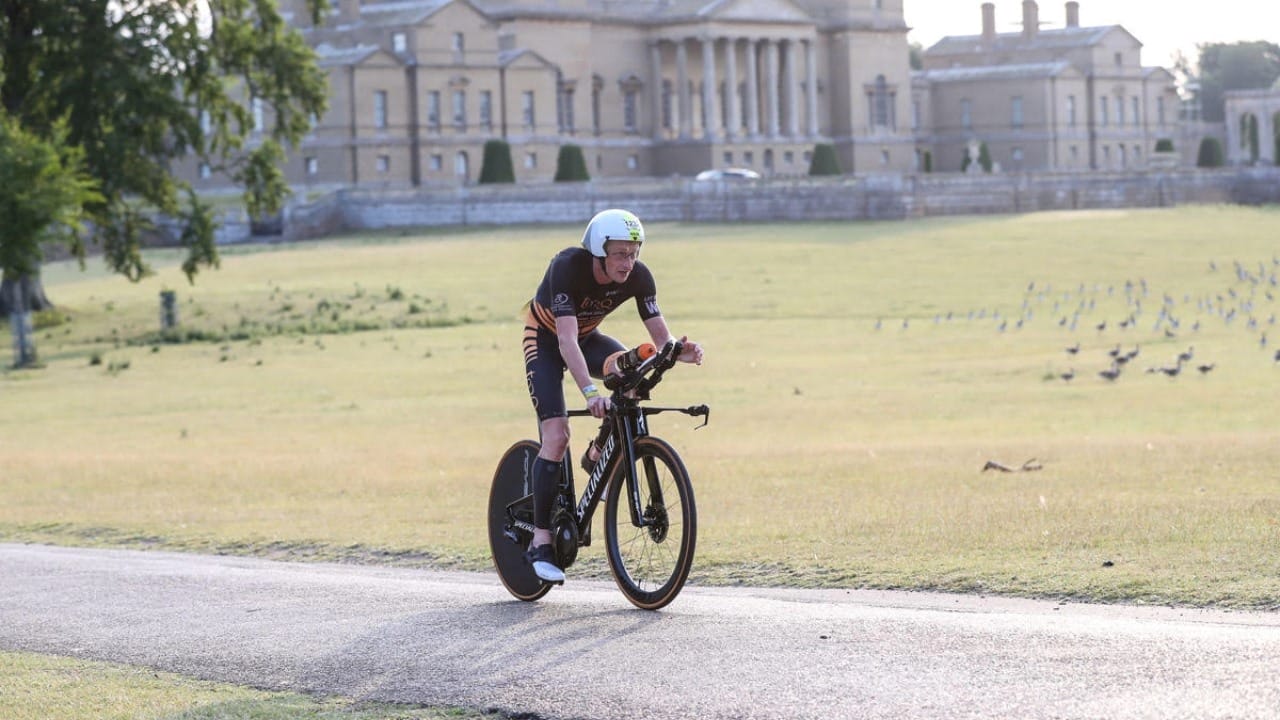
“10 years later, I’m still racing triathlon and I now have 10 x European and 9 x World Championship titles to date – ranging from super sprint to the full distance. But my proudest achievement has to be the IRONMAN World Championship in Kona last October. I won my age group by over 23 minutes in a time of 8:34, placing 6th fastest age grouper overall in the birth place of triathlon. What made this especially memorable was having my family there with me. They don’t often get to come along to many of the championships as they seem to clash with school and other commitments so having them there was pretty special.”
Flexibility and embracing the early starts – how a top level age-grouper manages the balancing act
Competing at the pointy end of the age-group field takes dedication – but Donald’s results are proof that you don’t have to be training full time to be competitive. Instead it comes down to careful planning – with a side of flexibility. We were interested to find out how Donald manages his time and makes sure he gets enough recovery.
“Along with being a husband, dad to two young boys, and working full time in the electrical industry, I try to train twice a day. I find by fitting in two sessions, one before work and one in the evening they are basically separated by 12 hours so you are training evenly through the week allowing your body to recover between.”
“I like to get the early session in before work/before the family wake up so that it’s “in the bank”. That way you’re ready for whatever the day throws at you. If the day takes an unexpected turn or something happens and you can’t train later, then at least you’ve got the early one done. You can reset and refocus on the next day.”
“Besides, most triathlons start very early in the morning so training first thing gets the body into a routine – ready for that early race day start!”
Plan to be flexible
“It’s also important to be flexible and to be able to adapt your training if schedules change. For example, as my sons have got older, I’ve adapted my training to fit around them. Whether that is splitting a turbo session into 2 or 3 separate blocks while running them around between clubs. Squeezing in a parkrun while they are at swimming, or riding to a destination or back for a family day out. It’s all about being flexible while balancing training and family life.”
“Competing at this level has taken years of consistent training to get to a stage where my body can absorb the training load. For any age-grouper, it’s important to listen to your body – which can take a long time to understand – and to be confident to make the decisions that are right for you.”
“You don’t need to be doing 20+ hour training weeks…” Top tips for busy age-groupers
Many would-be long distance triathletes are deterred by the thought of trying to fit all the training in. But while you’ll obviously need to be able to commit a fair amount of time to training if you want to race over the middle or full distance. It might not have to be as all-encompassing as you might think.
“You don’t need to be doing 20+ hour training weeks to undertake a full distance triathlon,” says Donald. “A simple routine of 5-7 sessions a week would be sufficient.”
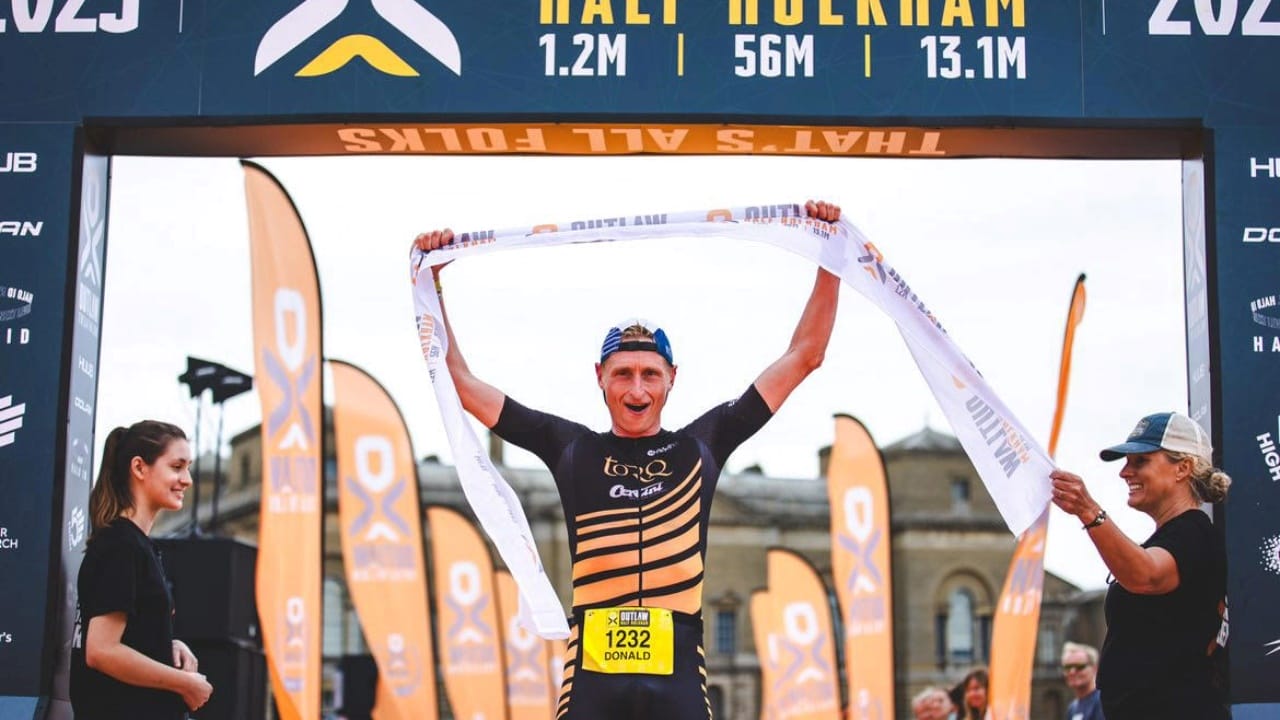
“My top tip for anyone considering training for their first middle or full distance event would be to focus on consistency with their training. It’s the regularity of the training that yields the results. NOT that magic one off VO2 max session!”
“It’s also important to listen to your body. Don’t push it too hard and learn to back off when your body is telling you to. Otherwise, you will likely end up burnt out or even worse injured. This is where a coach may be good at picking up the signs that you ignore.”
Being part of Team Outlaw – and expert insights for racing Outlaw Nottingham
Donald is part of Team Outlaw again in 2025 – a collective of age-group athletes ranging from first timers to aspiring PROs. With all his international racing experience, we were interested to know what it is about Outlaw that keeps him returning year on year – and his favourite Outlaw event.
“I’m excited to be part of team Outlaw again for 2025. The team really know how to put an event on, catering for all abilities and giving that big festival event feel to the day. Their events attract some of the best amateur athletes in the UK and with their self-seeding starts allows those who want to compete at the front of the race to duel it out together. It’s for these reasons that I keep coming back to their events and highly recommend them to others.”
“My favourite Outlaw event is the half distance at Nottingham. It’s like the venue was made for triathlon – and it was my first race with Outlaw back in 2017.”
Outlaw Nottingham race day tips
Swim
“Wear tinted goggles as you are swimming directly into the rising sun on the outward leg, then use the tower for spotting on the return leg.”
Bike
“Take it cautiously on the last 2-3km of the bike leg which goes through the Holme Pierrepont estate. The surface is uneven, tree lined and has a few steep speed bumps. You’ve nearly finished the bike leg, don’t push too hard and have an accident here!
Run
“Enjoy the run. Try to hide behind others going into the wind if you can – it’s a long way up along the lake and can be quite exposed, also try to avoid the geese!”


